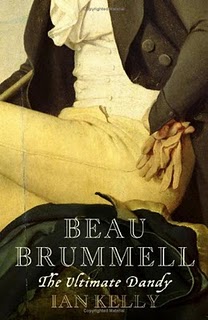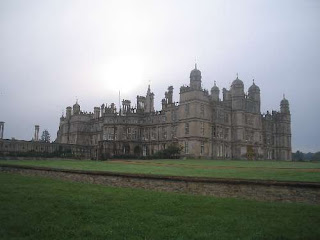Whilst in New York recently, I finally had to opportunity to meet with actor/author Ian Kelly. I was introduced to Ian through our mutual friend, Jo Manning. Ian and I had previously spoken on the telephone and emailed, but we’d never actually met as the fates inevitably ruined any plans we’d made to get together on either side of the pond. Therefore, it was a decided pleasure to actually take in a performance of Ian’s new play, The Pitmen Painters, and to finally have a drink and a chat with Ian afterwards.
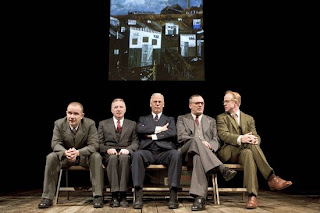 |
| Christopher Connel, from left, David Whitaker, Deka Walmsley, Michael Hodgson and Ian Kelly |
Direct from a sold-out engagement at London’s National Theatre, this fascinating new play by Tony Award winner Lee Hall (writer of Broadway’s mega-hit Billy Elliot) comes to Broadway with its entire original London cast intact. The Pitmen Painters is based on the triumphant true story of a group of British miners who discover a new way to express themselves and unexpectedly become art-world sensations. Ian plays Robert Lyon, who was hired to teach the men about art appreciation and whose efforts afford the group an entirely new way of looking at both art and their lives.
Of course, The Pitmen Painters wasn’t Ian’s first turn on the boards. He’s appeared in many other productions, many of them one-man shows.
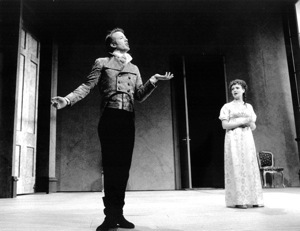
Ian has appeared in A Busy Day, the lost comedy by Fanny Burney commissioned by Sheridan for the 1800 season at Covent Garden that played first in Bristol in 1994 and then on the London fringe in 1995 before its eventual West End production in 2000. Ian played Frank Cleveland in both productions and helped champion the plays’ West End premiere, which he co-produced.
In a scene in The Pitmen Painters, Ian, as Lyon, actually creates a sketch of Oliver Kilbourn, the most gifted artist among the miners, whilst on-stage. The audience watches the sketch progress. Whilst the fact that Ian can draw while acting is amazing, it’s nothing compared to the multi-tasking he did during the 2004 run of Cooking for Kings, a play based on Ian’s biography of French chef Antonin Careme adapted for the new York stage as a one-man show; part of the first Brits Off Broadway Festival. In addition to acting, Ian both cooked and fed the audience.
A review by New York Theater Wire said: ‘Kelly’s performance is as tart as a lemon, as sweet as chocolate, as savory as a thick stew. And finally, it is as satisfying as a banquet. From early childhood most people learn to equate food with love. But few take the metaphor to the same extremes as legendary French chef Antonin Careme, whose life story is told in Ian Kelly’s one-man-show “Cooking for Kings.” Kelly fills his play with tantalizing details and garnishes them with ironic wit and clever wordplay. As a performer, Kelly has boundless energy and tremendous powers of concentration and he makes a technically difficult play look deceptively easy. While Careme, who is actually cooking, grabs bowls, pots and utensils from an overhead rack and chops, stirs and heats, he describes his activities with the zest of Julia Child. And Careme is accomplished at multitasking. He is never at a loss for words. He never loses his train of thought. If Careme’s story is fascinating because of the famous people he knew, the tumultuous times he lived in and the many innovations he made in the art of cooking (from the dishes he made to the hat he wore), it is powerful on a more personal level. Kelly portrays the great chef as vain and sarcastic but also vulnerable and ultimately tragic.’
Anthony Bourdain called the play: ‘A magnificent work. Ian Kelly is at the vanguard of the new rock’n’roll of culinary literature.’
Cooking for Kings brought Ian rave reviews in 2004 and he was brought back by popular demand by the theatre in 2006 in rep with his appearance in Beau Brummell in which Kelly played the Beau – another one-man show based on a book he’d written.
Beau Brummell opened on May 9th 2006 at 59e59 Theater in New York to coincide with the launch of Kelly’s biography of Brummell and the Anglomania Fashion Exhibition at the Metropolitan Art Museum.
From The New York Times: ‘This story of a man who is remembered for his clothes begins with the title character (Ian Kelly) stark naked. He is in the tub, holding a razor to his throat and threatening suicide, but he allows his valet, Austin (Ryan Early), to stop him… Mr. Kelly is extremely funny, engaging and intensely sympathetic as Brummell,
tossing out grand observations (“Excess is the antithesis of style,” “How can one be lonely with a looking glass?”) as if to the manner born while conveying with aching pathos the quiet agonies of a ruined man trying not to see through his delusions.’
In addition to Ian’s bringing Brummell to life on both the page and the stage, his bio of The Beau was made into a movie, This Charming Man.
Ian has also written the definitive biography of Casanova, which was named The Sunday Times Biography of the Year.
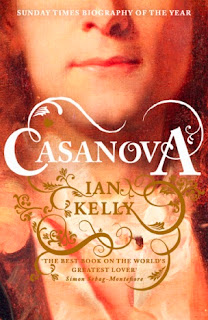
After the performance of The Pitmen Painters, Brooke and I met Ian by the stage door and headed across the street to the Glass House Tavern, where we slid into a semi-circle of a booth, ordered drinks and chatted about books, Brummell and London. Ian – quite tall, incredibly charming and a font of literary information – regaled us with tales of Brummell: the man, the book, the play and the movie. There were aspects of each that he both liked and disliked. While James Purefoy was tapped to play Brummell in the movie, Ian played Robert, one of the “Bad” Manners brothers. Screamingly funny note: On the first day of shooting, the assistant director, who apparently had no idea who Ian was, other than the actor playing Robert Manners, pulled Ian aside and attempted to explain his character to him. Ha!
Look for Ian playing the doctor in Downton Abbey (see tomorrow’s post) and as Hermione Granger’s Muggle dentist father in Harry Potter and the Deathly Hallows. In fact, the commercial for the film came on when we were together and after watching it, Ian turned to me and said, in best tongue-in-cheek fashion, “Looks like I didn’t make it to the trailer.” Ian was a bit taken aback when I asked him, apropos of nothing,”So, what’s Alan Rickman like?” “I’m sorry,” Ian responded after a beat, “Alan Rickman?” “Yes,” I clarified, “you know, Snape, in Harry Potter.” Turns out that Ian didn’t have any scenes with Rickman, but he did tell me that the set designers built the entire Granger house on a London back lot, furnished it to the highest degree of comfort and decoration, used it for his scenes and then dismantled the entire building down to the last nail.
Moving on to books, Ian told us about doing research in the London Library, living in Venice for a while while researching Casanova and about his next biography, due out in 2012. While I can’t give the game away, I can tell you that, according to Ian, his subject will be “yet another Georgian bad boy.” Hint: think theatre. You can visit Ian’s website here.
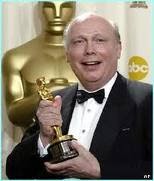 Downton Abbey’s writer and creator is Julian Fellowes (at left), who also wrote Gosford Park and The Young Victoria, recently said: “It is no secret that I am fascinated by the extraordinary variety of people that occupied the great country houses. Where men and women worked alongside each other and lived in close proximity, but were separated in their dreams and aspirations by a distance that makes the moon seem close. Television drama often relies on a structure that will involve characters of different backgrounds, any hospital soap opera or detective series can give you that, but there is no narrative base that can provide members of every level of society, sleeping under a single roof, more believably than a great house before the First War. “
Downton Abbey’s writer and creator is Julian Fellowes (at left), who also wrote Gosford Park and The Young Victoria, recently said: “It is no secret that I am fascinated by the extraordinary variety of people that occupied the great country houses. Where men and women worked alongside each other and lived in close proximity, but were separated in their dreams and aspirations by a distance that makes the moon seem close. Television drama often relies on a structure that will involve characters of different backgrounds, any hospital soap opera or detective series can give you that, but there is no narrative base that can provide members of every level of society, sleeping under a single roof, more believably than a great house before the First War. “






